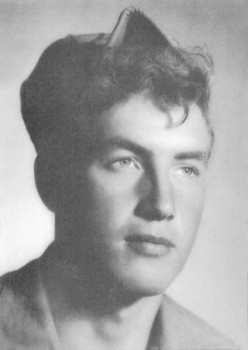The Gift of South Dakota
Subscriptions to South Dakota Magazine make great gifts!
Subscribe today — 1 year (6 issues) is just $29!
True Heroes and Sort-of Heroes
Nov 11, 2011
Black Hills people should make time this Veterans Day weekend to visit the Herbert Littleton monument in Spearfish.
No place tops the Black Hills when it comes to memorializing heroes in granite or bronze: Crazy Horse, Washington, Lincoln and the rest on mountains, and every U. S. president on Rapid City street corners. We even have beautiful monuments for sort-of heroes. A couple for Wild Bill Hickock come to mind.
The Littleton monument honors a true hero, and a local one, at that. One of eight South Dakota Congressional Medal of Honor recipients, Herbert Littleton lived in Spearfish and then Sturgis as a kid. As a young man — still a teenager, in fact — he worked for a Rapid City electrical appliance firm. Littleton joined the Marines just after his 18th birthday and found himself two years later at Chungchan, Korea, in the middle of a hot war. In the dark, early morning hours of April 22, 1951, he threw himself on top a grenade tossed into his company’s shallow foxhole. That fast action cost Littleton his life, and saved the lives of many other Marines.
His heroism is described on a plaque that’s part of the Spearfish monument. When the monument was unveiled, then-governor Bill Janklow said, “People will read it and they’ll say they can’t believe he did that.”
True. Yet what intrigues us about heroism, after we mull it over, is the realization that there’s something in human makeup that makes the ultimate sacrifice possible. It’s been proven again and again on battlefields, and during natural disasters. Lots of people, some among the last anyone would expect, are capable of true heroism.
Strangely, when we use the term “hero” loosely, we’re often talking about actions beyond the capabilities of 99 percent of the population. Like slam-dunking a basketball against defenders who stand seven feet tall, or muscling a football through a wall of 300-pound monster men.
Sort-of heroes typically hit the public consciousness in a blaze of hyped expectation. By contrast, true heroes usually emerge without fanfare. I heard lots of folks sharing stories and observations about Herbert Littleton at the monument unveiling ceremony, but no one claimed to have expected heroism from him, or to have heard anyone predict it. Here was an average-sized kid who played a little high school football at Sturgis, dropped out of school before graduation, joined the Marines in hopes of getting his education back on track, and planned to marry his sweetheart from Idaho. He served as a radio operator in Korea, and minutes before his death was sternly scolded by a lieutenant for gabbing needlessly over the airwaves.
In short, Herbert Littleton was not substantially different from most 20 year olds in 1951, or from the 20 year olds who now cruise the streets he knew in Spearfish, Sturgis and Rapid City.
Knowing Littleton was a normal guy until the last moments of his life somehow enhances his heroism. It might even make us think about our own capabilities differently — and those of contemporary young men and women we know.
The Herbert Littleton monument stands in the Indian Springs section of Spearfish City Park, at the intersection of Canyon and Dakota, under the three flags of the United States, the Marine Corps, and the state of South Dakota.
Paul Higbee has written regularly for South Dakota Magazine since 1991, serving as our Black Hills correspondent. Paul and his wife Janet live in Spearfish. This column originally appeared in the November/December 2000 issue. To order a copy or to subscribe, call 800-456-5117.











Comments